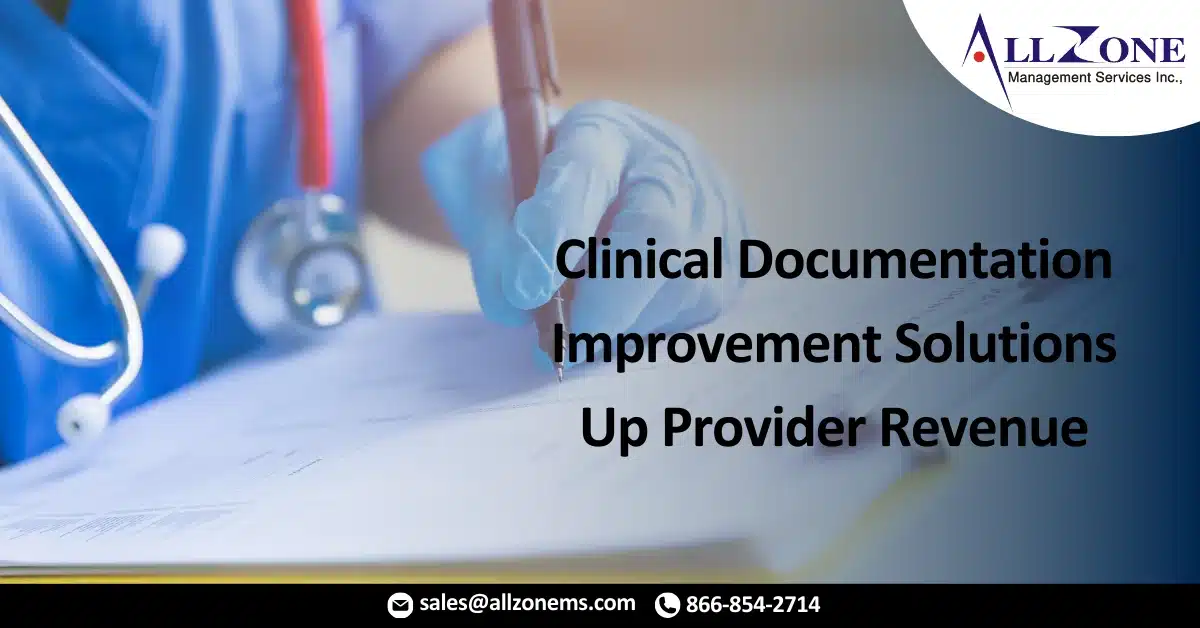Nearly all healthcare decision makers recently surveyed by KLAS said their organization saw financial gains after implementing a clinical documentation improvement solution.
Provider organizations are seeing financial improvements after implementing clinical documentation improvement (CDI) solutions, a recent KLAS survey shows.
Revenue improved for about 53 percent of healthcare executives, medical records directors and managers, and other decision makers surveyed by the research firm in the new performance report, “Clinical Documentation Improvement 2018: Workflows and Prioritization Drive Quality and Financial Outcomes.”
Approximately 38 percent of respondents also reported improved workflow efficiency and 19 percent said reporting accuracy and metric tracking improved.
Fewer healthcare leaders and decision makers, however, are realizing financial gains in the form of increased acuity (18 percent), improved documentation quality (16 percent), fewer full-time equivalents (3 percent), and reduction in payer denials (1 percent).
“All operations within a hospital are impacted by EMR documentation. Ensuring the accuracy of that documentation is a challenge, and the complexity is increasing as healthcare regulations, reimbursements, and care practices evolve,” the report stated. “Because of this complexity, provider organizations look to clinical documentation improvement (CDI) vendors to provide tools and services that improve efficiency and drive financial gains (which a majority of customers report achieving).”
Nearly all provider organizations interviewed by KLAS saw positive financial outcomes after implementing a CDI solution, regardless of the vendor used, the report added.
But Nuance and Chart Wise particularly earned a strong financial return on investment (ROI) for provider organizations, the report added.
“Customers state that Nuance’s strong frontend education drives positive financial outcomes and that ongoing reporting and metric tracking give them clear visibility into the solution’s financial ROI,” KLAS explained. “
“ChartWise customers see strong revenue improvement because the vendor is attuned to their needs and because the vendor’s proactive, nimble support helps customers fully leverage and optimize the solution,” the research firm added.
Other vendors with CDI solutions improving revenue for their provider organizations included Optum, 3M, and Iodine Software.
In addition to boosting revenue, newcomer Iodine Software also led the pack in terms of increased efficiency for clinical documentation specialists (CDSs).
In addition to improving revenue, about 80 percent of users also said the Iodine Software solution increased CDI efficiency. The market average for improved efficiency was at about 40 percent.
“Iodine Software offers a high level of partnership, and their uniquely automated prioritization tool empowers CDSs to maximize their efficiency,” the report stated.
KLAS noted that Iodine Software is considered a component vendor because most of its customers lack the ability to query from within the CDI solution. The CDI vendor designed the solution specifically for prioritization and customers tend to use other vendor systems to manage physician queries.
Iodine Software made a name for itself by specializing in prioritization of documentation at this time. But other vendors across the CDI market are also looking to boost their prioritization offerings.
How they approach prioritization, however, is a mixed bag at the moment, the report showed.
Iodine Software uses artificial intelligence technology to process clinical evidence from several data sources in addition to reviewing documentation, while 3M, Nuance, and Optum use markers or notifications to show a CDS which documentation within their workflow is high priority.
Other CDI vendors, like MModal and nThrive, provide some level of prioritization through alerts and notifications. And ChartWise has yet to focus on a prioritization functionality.
The varying approaches to how vendors prioritize documentation and charts for review mirrors how provider organizations are implementing prioritization strategies, KLAS noted. Provider organizations are also using a wide range of methods to identify high priority chart and documentation reviews.
The different methods used by vendors and providers for clinical documentation prioritization indicates a major opportunity in the CDI market, the research firm explained.
There is an appetite in the market for tools that can help with prioritization, and vendors differ in how thoroughly they have developed their functionality and/or rolled it out to customers. Iodine Software, Optum, and 3M have the highest number of interviewed customers using their prioritization tools,” the report stated.
CDI solutions for the outpatient space is another opportunity for the vendor market, KLAS suggested. The research firm found that provider organizations are lacking CDI tools to improve outpatient documentation.
“Provider organizations express high interest in this area, which is made complex by the myriad differences between the various outpatient specialties and the significant volume of outpatient services that most organizations have,” the report stated. “This complexity can make it difficult to standardize software or determine where CDI efforts will have the greatest impact, but it also makes outpatient CDI an area of high opportunity.”
All vendors analyzed by KLAS are currently developing tools and partnering with providers to offer outpatient documentation improvement. So far, only MModal has a tool specific to the care setting.
As the value-based reimbursement transition continues, provider organizations are looking to improve their clinical documentation and coding efforts to ensure their organization receives timely reimbursement that covers their total costs of care.
Alternative payment models heavily rely on accurate coding and documentation to determine payment rates for providers based on patient acuity, demographics, and other clinical factors. Partnering with a vendor solution that drives clinical and financial improvements will be key to succeeding in value-based reimbursement arrangements.
“Closing gaps in clinical documentation leads to improved revenue and higher documentation quality,” the report stated. “Provider organizations using CDI tools need vendor partners who have proven solutions that can drive clinical and financial outcomes, enable smooth workflows in the midst of regulation changes, and prioritize CDI tasks to maximize the impact of clinical documentation specialists (CDSs).”
For more information: CLICK HERE

